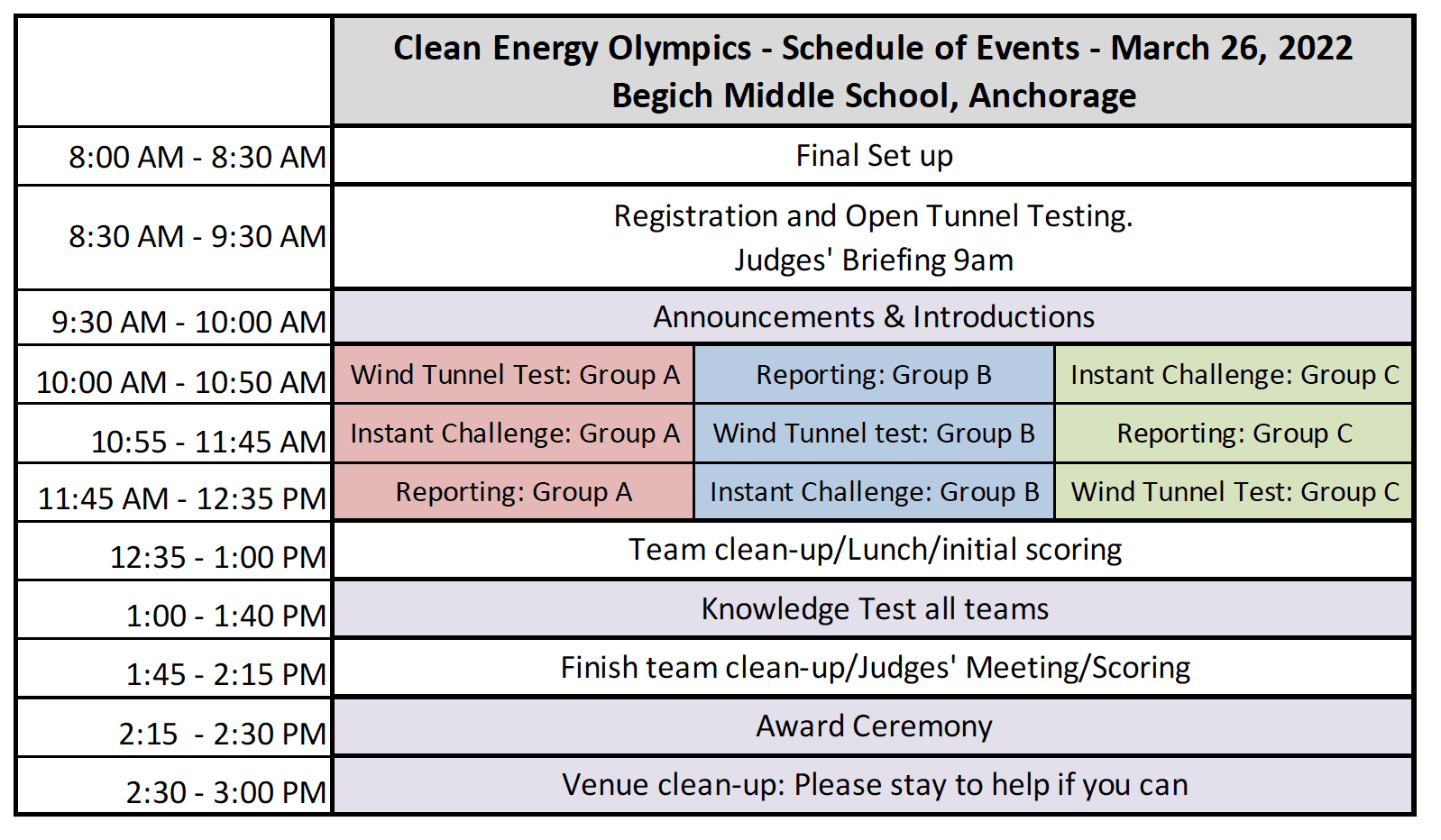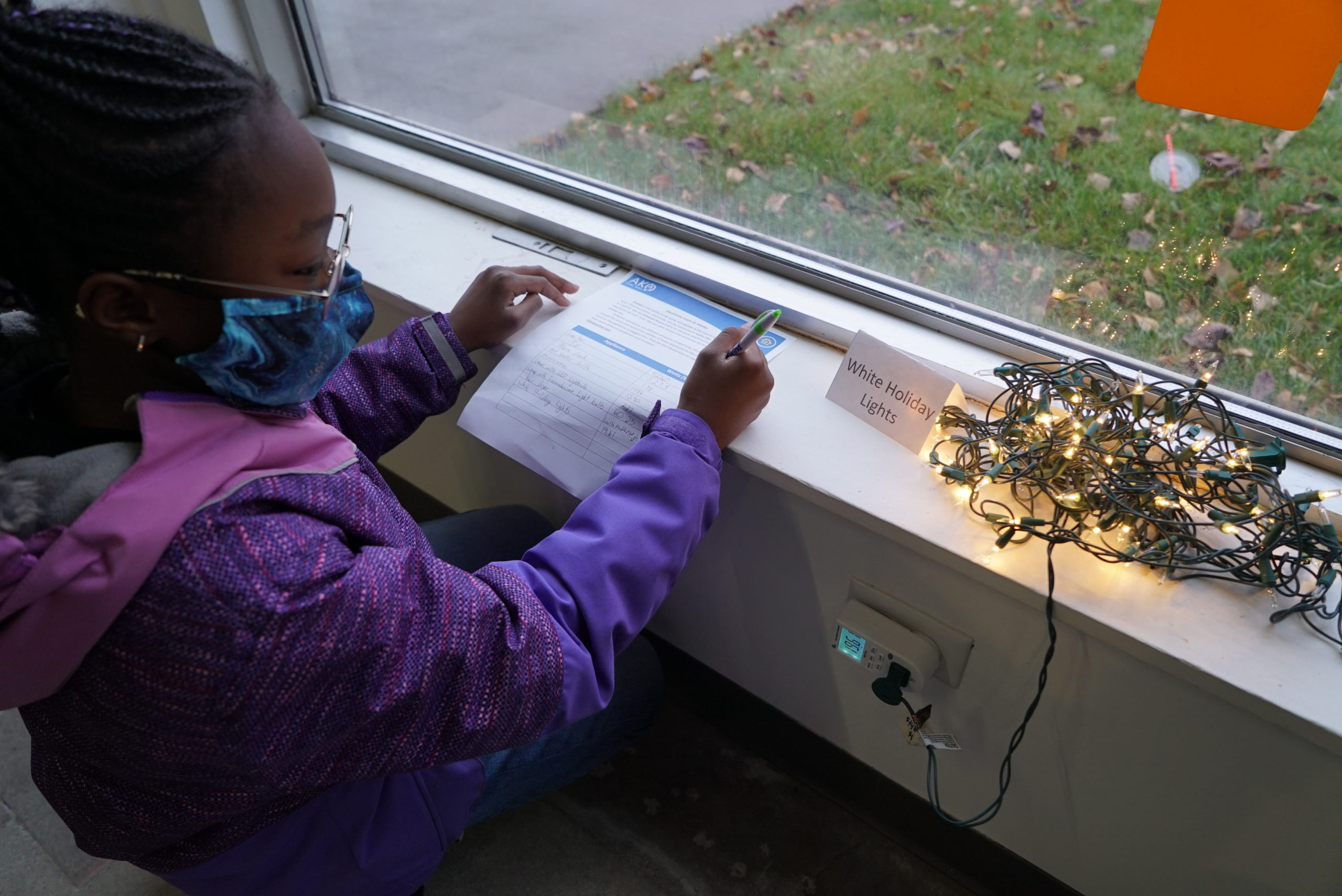Clean Energy Olympics 2022
4th-12th grade students will compete in one of four categories in spring of 2022: Wind, Solar, Hydro, or Efficiency. Projects culminate March 26-31 with student presentations to judges.
4th-12th grade students will compete in one of four categories in spring of 2022: Wind, Solar, Hydro, or Efficiency. Projects culminate March 26-31 with student presentations to judges.
Students will choose one category to compete in: Wind, Solar, Hydro, OR Efficiency. Throughout the semester, they will follow the engineering design process to test and improve their project.
The competition will culminate March 26 with in-person judging at Begich Middle School in Anchorage. Students who can’t or don’t want to travel for in-person competition can present to judges virtually through March 31. See below for more details on each of the categories.
Each participant must bring a media release signed by a parent guardian.


In this category of the Clean Energy Olympics, students design and build a model wind turbine. The top two teams will be invited to participate in the National KidWind Competition in May 2022.
Students participating virtually will test the power production of their design using a classroom fan provided by your teacher. In-person testing will take place using the REAP wind tunnel. A live, in-person showcase will take place March 26 at Begich Middle School (pending COVID restrictions/trends).
Rubrics, resources, requirements, and virtual submission page for the 2022 CEO Wind Challenge can be found here. The rules of the National KidWind Competition can be found here.
Students that enter this challenge need to construct a solar powered device, such as a model house, ferris wheel, phone charging tree, machine, car, etc — as long as it is powered by solar! Projects can be tested using a powerful incandescent lightbulb or the natural solar resource when solar radiation improves in March.
Rubrics, resources, requirements, and virtual submission page for the 2022 CEO Solar Challenge can be found here.


In the Hydro challenge, competitors will build a model hydroelectric system which utilizes a measured flow to produce electricity. Students are encouraged to utilize natural and/or repurposed materials for their design. Students can test their systems under a faucet or using a natural, flowing water source.
A design manual for the CEO Model Hydro System (pictured left) can be downloaded here. Rubrics, resources, requirements, and virtual submission page for the 2022 CEO Hydro Challenge can be found here.
This category is a bit more open-ended with less engineering. Students pick a room or building to do complete energy assessment and make recommendations for improvements. If they are also able to put in place no-cost conservation and efficiency measures, or persuade an adult to implement low-cost measures, they may also measure reduced energy use of the area.
Download REAP’s Energy Assessment Tool here. Rubrics, resources, requirements, and virtual submission page for the 2022 CEO Efficiency Challenge can be found here.

